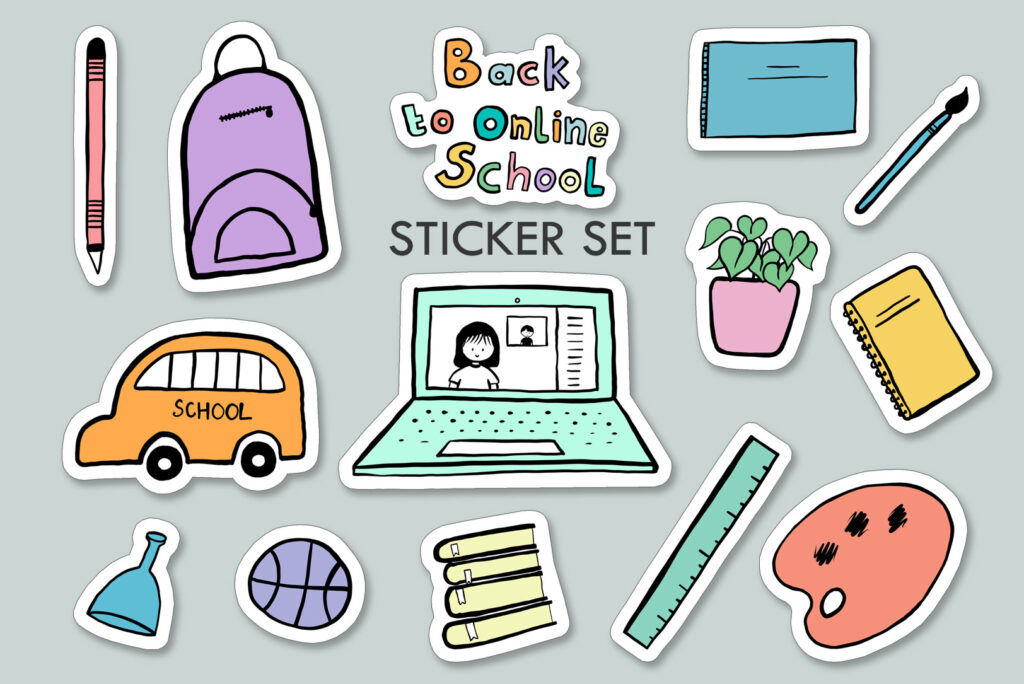In today’s fast-paced digital world, engaging children in the classroom can be quite challenging. However, one simple and effective tool that has stood the test of time is stickers. Stickers can serve as powerful motivators, rewards, and tools for enhancing creativity and positive behavior in the classroom. In this article, we will delve into the world of stickers in education, exploring their importance, benefits, types, and how to use them wisely.
Importance of Stickers
Stickers have been a staple in the classroom for generations, and their importance cannot be overstated. They serve as a versatile tool to keep children engaged, interested, and motivated to learn. Here’s why stickers matter:
Benefits of Stickers
Academic Motivation
Stickers can boost academic motivation by rewarding students for their achievements. Whether it’s acing a test or completing a challenging project, receiving a sticker can instill a sense of accomplishment and encourage students to excel.
Creativity Boost
Stickers are not just for rewards; they can also unleash creativity. Teachers can use them to spark imagination and inspire students to think outside the box. Arts and crafts projects with stickers can lead to innovative thinking and artistic expression.
Positive Behavior
Stickers are excellent tools for promoting positive behavior in the classroom. They can be given as tokens of good behavior, encouraging students to be respectful, helpful, and cooperative with their peers.
Types of Stickers
There is a wide variety of stickers available for classroom use. Each type serves a specific purpose, catering to different aspects of education:
Reward Stickers
Reward stickers are designed to acknowledge and celebrate achievements. They can be used to mark completed assignments, outstanding effort, or reaching educational milestones.
Educational Stickers
Educational stickers come in various forms, from numbers and letters to science-themed stickers. These stickers can make learning fun and interactive, helping children grasp complex concepts with ease.
Decorative Stickers
Decorative stickers are all about adding a touch of creativity and personalization to the learning environment. They can be used to decorate classroom materials, creating an inviting and inspiring space for students. Consider what sticker material you will order for this.
Using Stickers Wisely
To maximize the impact of stickers in the classroom, teachers should use them strategically:
Setting Goals
Encourage students to set achievable goals. When they reach these goals, reward them with stickers. This not only motivates students but also teaches them the importance of goal setting and hard work.
Tracking Progress
Stickers can be used to track students’ progress throughout the school year. A sticker chart can serve as a visual representation of achievements, allowing students to see how far they’ve come.
Customizing Rewards
Every child is unique, and their preferences vary. Customize sticker rewards based on individual interests. This personalized approach ensures that stickers remain exciting and motivating for each student.
Sticker Challenges
To make sticker usage even more engaging, consider implementing sticker challenges:
Weekly Challenges
Introduce weekly challenges where students can earn special stickers for accomplishing specific tasks or exhibiting exceptional behavior. This adds an element of excitement to the learning process.
Themed Challenges
Create themed challenges tied to seasons, holidays, or classroom topics. Themed stickers add a fun twist to learning and keep students actively participating.
Conclusion
Stickers may seem like small tokens, but their impact in the classroom is significant. They motivate, inspire creativity, and foster positive behavior. By using stickers wisely and incorporating challenges, educators can create a more engaging and rewarding learning environment for their students.
FAQs
1. Can stickers be used in all grade levels?
- Yes, stickers can be adapted for use in all grade levels, from kindergarten to high school. The key is to tailor them to suit the age and preferences of the students.
2. Are there any alternatives to stickers for motivation?
- While stickers are effective, other alternatives like certificates, praise, and small rewards can also be used alongside or instead of stickers.
3. How do I prevent sticker overload?
- To prevent sticker overload, it’s essential to maintain a balance between sticker usage and other forms of motivation. Use stickers strategically and vary the rewards to keep students engaged.
4. Can stickers be used for remote learning?
- Yes, stickers can be incorporated into remote learning by using digital sticker charts or mailing physical stickers to students as rewards for their achievements.
5. What if a student is not motivated by stickers?
- Not all students are motivated by stickers. It’s crucial to understand individual preferences and explore other motivational techniques that work for each student.

